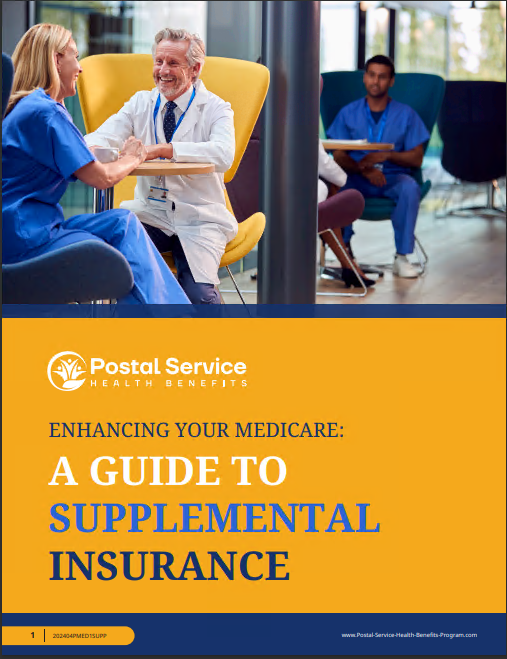Key Takeaways
-
The Postal Service Health Benefits (PSHB) program’s launch in 2025 marks a transformative moment in federal employee healthcare, offering tailored plans and a shift in Medicare integration rules.
-
Actively reviewing your options during Open Season is critical to aligning your coverage with your healthcare needs and financial situation.
A New Chapter in Federal Employee Healthcare
The Postal Service Health Benefits (PSHB) program, set to launch on January 1, 2025, is a significant milestone for USPS employees, retirees, and their families. Designed to replace the Federal Employees Health Benefits (FEHB) program for postal workers, PSHB represents a targeted approach to healthcare tailored specifically for the postal workforce. Whether you’re already covered by FEHB or new to federal health plans, understanding the PSHB transition will be crucial to navigating this new era in healthcare benefits.
This change isn’t just administrative—it’s a chance to reimagine how healthcare is delivered to one of the largest federal workforces. With new rules, timelines, and coverage options, the PSHB program is built to better address the unique healthcare needs of USPS employees and retirees while supporting long-term financial sustainability.
What’s Behind the Switch to PSHB?
The shift to PSHB is part of the Postal Service Reform Act of 2022, which set out to modernize USPS operations and address its financial challenges. Here’s why PSHB is a game-changer:
-
Tailored Coverage: Unlike the broader FEHB plans, PSHB is specifically designed for the postal workforce, considering its unique healthcare needs.
-
Medicare Alignment: A stronger emphasis on integrating Medicare for eligible retirees simplifies benefits and reduces redundancies.
-
Cost Management: PSHB helps USPS stabilize its finances by streamlining health benefits and reducing long-term costs.
-
Enhanced Options: The new plans offer flexibility and variety, making it easier to find one that matches your specific situation.
By focusing on these priorities, PSHB aims to create a more efficient, effective, and user-friendly healthcare system for postal employees and retirees.
Key Deadlines You Can’t Miss
The transition to PSHB includes important dates that you’ll want to mark on your calendar:
-
Open Season: From November 11 to December 9, 2024, you can review available PSHB plans and make your selections.
-
Effective Date: On January 1, 2025, PSHB will fully replace FEHB for USPS employees and retirees. Any changes made during Open Season will take effect on this date.
If you’re currently enrolled in an FEHB plan, you’ll automatically be transferred to a corresponding PSHB plan. But don’t leave things to chance—use Open Season as an opportunity to explore your options and ensure your new plan fits your needs.
How Retirees Will Be Affected
The PSHB transition introduces several changes for retirees, especially those eligible for Medicare. A major component of the program is the requirement for Medicare-eligible retirees to enroll in Medicare Part B to maintain their PSHB coverage. This new rule starts in 2025 and affects both retirees and their Medicare-eligible dependents.
Medicare Integration: The Key Details
-
Who Must Enroll? Retirees who leave USPS after January 1, 2025, and are Medicare-eligible must enroll in Medicare Part B.
-
Exemptions: If you retired before January 1, 2025, and are not enrolled in Medicare Part B, you’re exempt from the new requirement.
-
Coordinated Benefits: Medicare Part B becomes your primary insurance, with PSHB covering additional costs like copayments and coinsurance.
-
Improved Efficiency: The integration simplifies claims processes and reduces redundancies, ensuring retirees get maximum value from their coverage.
Financial Planning for Medicare Part B
The 2025 standard Medicare Part B premium is $185 per month, with an annual deductible of $257. These costs are important to factor into your retirement budget. Missing the Medicare enrollment deadline could result in penalties and gaps in coverage, so make sure to plan ahead.
What About Active Employees?
For active USPS employees, the PSHB program offers several benefits tailored to your needs while maintaining the government’s contribution toward premiums. Here’s what you need to know:
-
Expanded Choices: PSHB plans are specifically designed for postal workers, offering options that cater to your unique occupational health risks and preferences.
-
Automatic Enrollment: If you’re currently in FEHB, you’ll automatically transition to a comparable PSHB plan unless you make changes during Open Season.
-
Tailored Benefits: From preventive care to specialized services, PSHB plans aim to provide comprehensive support for you and your family.
Taking the time to review your options during Open Season ensures you’re maximizing your benefits and aligning your healthcare coverage with your personal and professional needs.
How Families Are Impacted
If your family depends on your USPS health benefits, the transition to PSHB will affect them as well. While self-only, self-plus-one, and family coverage options remain available, you’ll need to pay close attention to the details of each plan to ensure it meets your household’s needs.
Steps to Prepare Your Family for PSHB
-
Review Provider Networks: Confirm that your family’s preferred doctors and healthcare facilities are included in the PSHB plan you select.
-
Compare Coverage Options: Evaluate whether a self-plus-one or family plan is the most cost-effective choice for your situation.
-
Plan for Future Needs: Consider any anticipated healthcare needs for you or your dependents and choose a plan that provides flexibility.
Taking these steps ensures that your family transitions smoothly into the new program without any disruptions in care.
Open Season: Don’t Miss This Chance
Open Season is your opportunity to take control of your healthcare coverage. From November 11 to December 9, 2024, you can:
-
Explore Plan Options: Use plan comparison tools to evaluate coverage, costs, and networks.
-
Ask for Guidance: USPS benefits specialists can help answer your questions and clarify the details of the new program.
-
Make Adjustments: Switch to a different plan or adjust your coverage levels to better suit your needs.
Proactively participating in Open Season ensures you’re not just settling for a default plan but actively choosing one that aligns with your priorities.
Addressing Common Concerns
What If I Do Nothing During Open Season?
If you’re currently enrolled in FEHB, you’ll be automatically transitioned to a comparable PSHB plan. However, automatic enrollment may not be the best fit for your needs. Reviewing your options ensures you’re making the most informed decision.
Will My Current Providers Be Covered?
PSHB networks may differ from FEHB plans, so it’s essential to check if your preferred doctors and specialists are included in your chosen plan. Use online directories or contact plan representatives for confirmation.
What Happens If I’m Not Medicare-Eligible?
If you’re not eligible for Medicare, you’ll still have access to PSHB plans, but your out-of-pocket costs may be higher compared to those with Medicare Part B. Carefully review plan details to understand how this affects you.
Budgeting for PSHB
A key part of this transition is reassessing your healthcare costs. Here’s how you can prepare:
-
Factor in Medicare Costs: If applicable, include Medicare Part B premiums and deductibles in your budget.
-
Compare Plan Costs: Evaluate premiums, deductibles, and out-of-pocket maximums for different PSHB options.
-
Plan for the Unexpected: Anticipate additional costs like copayments and coinsurance for services not fully covered.
With careful planning, you can avoid surprises and ensure your healthcare remains affordable under the new system.
Embracing the Future of Healthcare
The Postal Service Health Benefits program is more than a replacement for FEHB—it’s a step forward in creating healthcare plans that truly reflect the needs of USPS employees, retirees, and their families. By staying informed, taking advantage of Open Season, and planning for Medicare integration, you can turn this transition into an opportunity for better coverage and long-term savings. Make the effort now to ensure a smooth and successful move into 2025.






